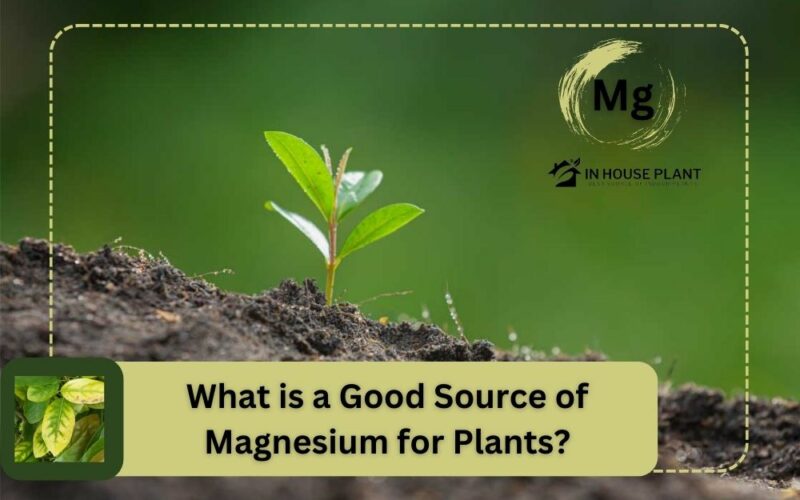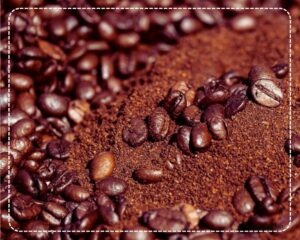Have you spotted the symptoms of Magnesium deficiency in your plants? keep reading to tell you about my experiences in finding the best sources of Magnesium for plants.
Plants absorb Mg from soil and it is one of the most abundant minerals in the Earth’s crust, but why do plants show the symptoms of Magnesium deficiency? Various factors such as soil PH or nutrient balance are involved in this issue, but anyway, if you spot its shortage, you must add Magnesium-based fertilizers to plants.
Hence, come on to find good sources of Magnesium for plants, but before that, Let’s review the role of Mg in plants and its importance.
➡ You can also hear the audio version of this article.
Why Is Magnesium Important for Plants?

Plants for their healthy growth and development need to absorb nutrients from the soil and rarely from the air. These essential nutrients are divided into Macro and micronutrients and Magnesium along with Nitrogen, Phosphor, Potassium, Calcium, and Sulfur belongs to macronutrients.
Both macro and micronutrients play crucial roles in plant physiology but what is their difference? Unlike micronutrients, your plant needs relatively large quantities of macronutrients for its growth and development. hence, when you hear Magnesium is a macronutrient, means your plant requires a large amount of it for its physiological processes. Let’s find some of the main functions of magnesium in plants:
- Chlorophyll synthesis
- ATP production
- Protein synthesis
- Nutrient uptake and transport
If you want to know more about the function of Mg in plants, I recommend reading my other post “What is Mg for plants?”. I discussed it in detail.
Some people after finding out Mg is a macronutrient; think they must add a lot of Mg to the soil to prevent Magnesium deficiency. Never do it. It’s important to note that excessive amounts of Mg can poison your plant.
Fertilizing with Mg sources is done only when you have spotted the symptoms of Magnesium deficiency or you know about the factors that will cause Mg shortage. As I told you above, Magnesium is a critical compound in Chlorophyll structure, hence, yellowing the leaves while the veins are green is the main symptom of Magnesium deficiency in plants.
If you want to know more about the Mg deficiency signs, read my other post about “Is Magnesium good for plants?”. I also discussed it, particularly for palm trees and blueberry plants. if you spot these symptoms you must think about the best sources of Magnesium for plants. let’s find it.
Primary Sources of Magnesium for Plants

First, common to raise our knowledge about 4 primary sources of magnesium for plants:
Soil Minerals:
In terms of frequency, Magnesium is the eighth ion in Earth’s crust. So, the soil minerals are its primary source for plants. Magnesium is found naturally in various minerals, such as:
- Dolomite (a calcium-magnesium carbonate)
- Magnesite (magnesium carbonate
- Serpentine (a magnesium silicate).
But how does their Mg ion become available for plant uptake? thanks to the weather. After weathering the above minerals, they will break down over time and magnesium ions will be released into the soil.
Organic Matter:
The decomposed plant and animal residues (Organic matter) are organic sources of magnesium for plants which release nutrients such as magnesium into the soil.
Fertilizers:
Chemical, natural, and organic Magnesium-based fertilizers are in the market which are readily available sources of magnesium for plants to raise magnesium levels in the soil. In the following, I will discuss them in detail.
Irrigation Water:
Have you ever wondered if irrigation water can be a source of Magnesium for plants? The amount of Mg in some regions is significant and can be considered as a plant’s magnesium supply. To know about the concentration of magnesium in water you must be measured to ensure about it.
Natural Sources of Magnesium for Plants

Before introducing the natural sources of magnesium for plants, I want to ensure you have a correct definition of Natural fertilizers. Do you know what are they?
When a fertilizer is divided from a natural source without synthetic chemicals, we call it a natural fertilizer. However, a natural fertilizer may undergo minimal processing or purification steps during its production.
Natural sources can be both organic and inorganic materials. Hence organic fertilizers are a subcategory of natural fertilizers. Now, come on to find out several inorganic natural fertilizers that can be good sources of Magnesium for plants. The organic fertilizers will be discussed in the next section.
Rock Dust:
Do you know what’s rock dust? A finely ground rock powder is called rock dust. They are used for various purposes. But depending on the type of rock, they can work as a slow-release fertilizer. Certain types of rock dust are rich in minerals and trace elements. For example, basalt contains significant amounts of magnesium, and its fine powder is applied to the soil as a fertilizer to improve soil fertility.
Epsom Salt:
Very famous magnesium-based fertilizer. Epsom salt, chemically known as magnesium sulfate, is provided from the evaporation of lake water. It is a natural source of Magnesium for plants that is used as a readily available and easily absorbed form of Mg.
Due to its nature, it can be dissolved in water easily, so, not only you can add it to the soil, but also apply it as a foliar spray too. However, you must note that Epsom salt can decrease the soil PH and don’t use it in acidic soils. As you know in soils with low PH, the Mg absorption will be decreased.
Dolomitic Lime:
If you need a calcium and Magnesium fertilizer, Dolomitic lime can work well. It is a type of limestone that contains both calcium and magnesium carbonate. Dolomitic lime not only is a natural slow-release source of magnesium for plants but also is used to raise soil pH in acidic soils.
Organic Sources of Magnesium for Plants

As mentioned in the previous section, organic fertilizer is a kind of natural fertilizer that is divided from organic sources (plant and animal materials) such as fish emulsion, compost, bone meal, manure, or plant residues with a minimally processed.
Before digging into organic sources of magnesium for plants, let to note several facts about them:
- Here we mention them as organic sources of Mg while they also contain various Macro and Micronutrients.
- You can consider organic fertilizers as a slow-release fertilizer. It is due to the organic matter gradually breaking down in the soil and slowly releasing its nutrients. So, an organic fertilizer will provide a long-lasting supply of nutrients for your plant.
- Organic fertilizers not only are environmentally friendly materials but also improve the microbial activity in the soil and enhance its structure. They also increase water retention and promote overall soil health.
Seaweed and Kelp Extracts:
The seaweed and kelp extracts are derived from various species of marine algae and are popular types of organic sources of Magnesium and other essential nutrients for plants.
You can buy them from the market as ready-available fertilizers. They can be used as foliar sprays; however, you can add them to soil. The seaweed and kelp extracts will also work well to enhance stress tolerance, especially after repotting. They also stimulate the plant growth.
Compost:
Organic compost such as animal manure or kitchen scraps are source of magnesium for plants. However, they are slow-release fertilizers and cannot work well in severe Magnesium deficiencies, but are perfect for improving the soil structure.
Animal Manure:
Animal manure depending on the feeding of animals, can be one of the best organic magnesium (and other essential nutrients) sources for plants. However, they often contain high levels of nitrogen (especially poultry manure,) that may burn plants. so, you must compost or age manure before applying it.
Banana Peels:
Honestly, I used to recommend Banana peels as good sources of Potassium for plants until studied an article and found out Banana peels are rich in Mg too, and can be organic sources of Magnesium and potassium for plants.
You must dry Banana peels and then grind them into a powder. Now, you have organic fertilizer that can be sprinkled around your plant soil or added to compost.
Wood Ash:
Have you ever heard that after a fire in the jungle, its soil gets more fertile? It’s due to burned wood converted to wood ash. It contains various nutrients such as magnesium. You can add it to the soil as an organic source of magnesium for plants.
Please note that wood ash contains a lot of Calcium which will raise the soil’s pH.
|
I hear from some gardeners that Coffee grounds are an organic source of nutrients such as Mg. However, it contains trace amounts of magnesium that are not adequate to satisfy the plant’s needs. However, adding Coffee grounds to the soil is not bad because it improves soil structure and water retention which helps magnesium absorption by plants. |
Conclusion
As you know magnesium is vital for plant growth due to its role in photosynthesis, enzyme activity, and many other plant physiological processes. So, to have healthy plants, you must maintain sufficient magnesium levels in the soil.
I tried to provide you with various sources of magnesium for plants, including natural and organic fertilizers such as Epsom salt and compost. Several factors are involved in determining the best one for your garden for instance the soil PH, nutrient balance, or the severity of Mg shortage.
Have you ever used organic fertilizers? Do you think they can work well? Do you know other natural sources of magnesium for plants? Please share your experiences and ideas with our readers below this page.

Elahe Rabiei
Hi, I’m Elaheh. My Academic major is plant protection, and houseplants are my expertise. As a houseplant lover, my house is full of indoor plants and it is my passion to take care of them. Hence, I’m here to share my knowledge and experience about growing healthy houseplants. I am also a plant protection advisor, so feel free to ask me any questions you may have.


 A Fact about
A Fact about